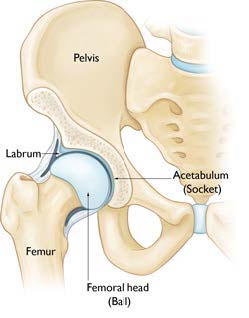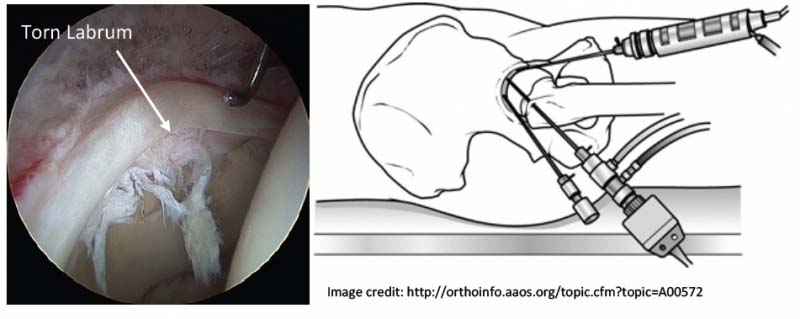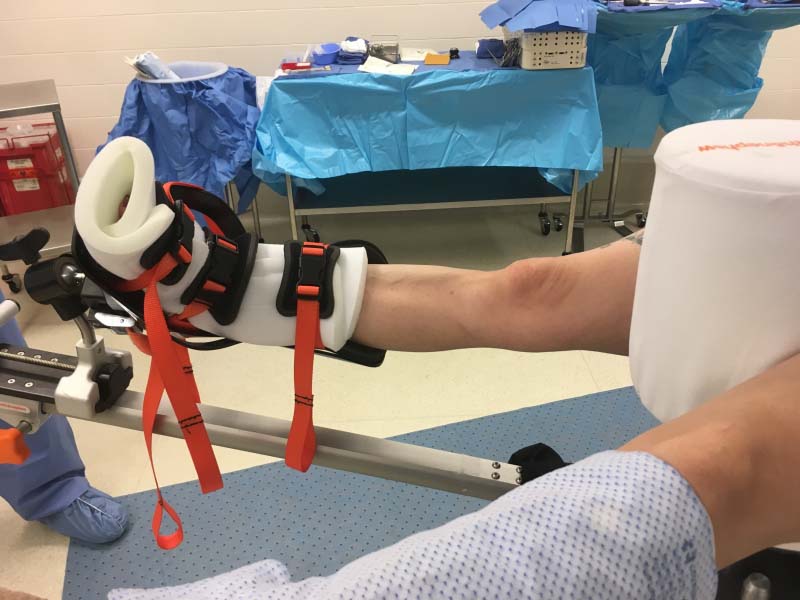
Mia Hagen, MD, is an expert in the Seattle area in hip arthroscopy. Hip arthroscopy is a minimally invasive surgical procedure used to diagnose and treat problems of the hip joint and surrounding soft tissues. Hip arthroscopy is same-day surgery and is generally performed under general anesthesia. Hip arthroscopy usually takes between 1.5 to 2 hours, although the length of time can vary depending on the type of procedure being performed.
Advantages vs. Open Surgery
Advances in arthroscopic surgical equipment and techniques now allow surgeons to use minimally invasive arthroscopic techniques to treat conditions which previously would have required more invasive, open surgical procedures.
Hip arthroscopy involves several small incisions through which your surgeon inserts an arthroscope (camera) and related surgical tools if needed.
Compared to open surgical procedures, these smaller incisions and tools cause less disruption to the hip joint and related soft tissues and result in:
- Less pain and scarring
- Fewer complications and less risk of infection
- Shorter recovery time
These advantages also allow surgeons to preemptively treat conditions that cause osteoarthritis, thus, in some cases, delaying the onset of hip arthritis and delaying or eliminating the need for later hip replacement. This is a concept called Hip Preservation.
Conditions Treated
Hip Arthroscopy may be recommended for hip conditions that do not respond to non-surgical treatment. Hip arthroscopy may be recommended as treatment for the following conditions.
- Hip impingement (femoroacetabular impingement)
- Labral Tears
- Removal of loose fragments of cartilage inside the hip joint.

Procedure
 After anesthesia, your leg will be put in traction. Your hip will be pulled away from the socket enough for your surgeon to insert instruments, see the entire joint, and perform the needed procedures.
After anesthesia, your leg will be put in traction. Your hip will be pulled away from the socket enough for your surgeon to insert instruments, see the entire joint, and perform the needed procedures.
Two to five small incisions (each less than 1 cm long) are made around the hip to insert the arthroscopy camera and necessary instruments. An x-ray machine is used to guide the tools into the hip joint. Fluid (sterile saline water) irrigates and fills the joint space for better viewing.
Your surgeon will evaluate the joint before beginning any specific treatments.
Once the problem is clearly identified, your surgeon will insert other small instruments through separate incisions to repair it.
Surgical Animation
See an example of hip arthroscopy in the surgical animation below.
Post-Op and Recovery
Prior to discharge you will be given a written instruction sheet, pictures of your surgery, a prescription for therapy, and a copy of physical therapy (PT) guidelines.
Most patients should be able to walk with crutches immediately after surgery with partial weight bearing (foot flat on the ground as you walk).
Physical therapy is necessary to achieve the best recovery and, in some cases, can begin the day after surgery.
Specific exercises to restore your strength and mobility are important. Your therapist can also guide you with additional do's and dont's during your rehabilitation.
Thinking of scheduling an appointment to be evaluated for hip arthroscopy?
Dr. Mia S. Hagen, is the expert to see for minimally invasive hip arthroscopy, she is an expert in the field and treats athletes of all levels.